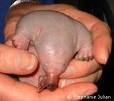
Climbing Mt. Everest is not a task to be undertaken lightly. People die attempting to reach the top of the world every year. However, 1996 was a particularly deadly year for climbing, and it was immortalized in several books and a made for TV movie.

 The most famous of the books is probably Jon Krakauer's book
The most famous of the books is probably Jon Krakauer's bookInto Thin Air . Krakauer is a climber as well as a writer of non-fiction books and outdoorsman magazine articles. He was commisioned by Outside magazine to chronicle his attempt to reach the peak. He happened to be there during the most deadly season in Everest climbing history, when 8 people, including 2 experienced climbers (who were paid guides) died in a sudden blizzard.

This was not the only book about this tragedy. Coincidently, an IMAX crew, lead by director David Breashears, was filiming the famous IMAX movie about the mountain. Not only were they involved in filming, but they were also instrumental in helping to organize the rescue efforts. Breashears wrote about the trip in his book Everest, Mountain Without Mercy.
Other guides who survived have a website that is interesting to read. I'm also reposting the NOVA website, because it has a lot of cool information on it, including information about what it is like to climb at high altitudes.
Part of the issue that year was the large number of relatively inexperienced climbers - hobby climbers who were wealthy enough to pay the $50, ooo to have an expert help get them to the "top of the world." When you shell out that kind of money, or take that kind of money to provide the service, disappointment is not always seen as an option.
Everest is someplace I would like to see - if someone paid for me to take a trip to the base camp I would go in a heartbeat. However, I doubt I would make an attempt for the summit - it's too dangerous, and even if I were to get in tip-top shape, I'm still not an experienced enough ice-climber.
What do you think? Would you pay that kind of money for a once in a lifetime trip? At what point would you head back? Is the adventure worth risking your life?







